
The Enchanting Holy Cross Mountains
Explore the Holy Cross Mountains: Poland's ancient mountain range rich in natural beauty, historical landmarks, and cultural heritage awaiting every traveler.
The Holy Cross Mountains, or Świętokrzyskie Mountains, are one of Poland's oldest mountain ranges. Nestled in the heart of the Świętokrzyskie Voivodeship, these mountains are named after the relics of the True Cross kept at the Holy Cross Monastery. This destination is steeped in history, culture, and natural beauty, making it a must-visit for any traveler. The region offers a range of outdoor activities, from hiking and cycling to exploring ancient forests and caves. The Świętokrzyski National Park, established in 1950, protects the most valuable parts of the range, including the iconic Łysa Góra (Bald Mountain) and Łysica, the highest peak. The park is home to diverse flora and fauna, making it a paradise for nature lovers. Apart from its natural allure, the Holy Cross Mountains are rich in cultural heritage. Visitors can explore medieval castles, ancient monasteries, and charming villages that offer a glimpse into the region's past. The Holy Cross Monastery, with its stunning views and historical significance, is a highlight not to be missed. Whether you're an avid hiker, a history buff, or someone looking to unwind in nature, the Holy Cross Mountains have something for everyone.
Local tips in Holy Cross Mountains
- Visit the Holy Cross Monastery early in the morning to avoid crowds and enjoy serene views.
- Wear comfortable hiking shoes as the terrain can be rugged, especially on trails leading to Łysa Góra and Łysica.
- Bring binoculars for bird watching in the Świętokrzyski National Park.
- Try local cuisine in the nearby villages for an authentic taste of the region.
- Check the weather forecast before planning your hike as conditions can change quickly in the mountains.
The Enchanting Holy Cross Mountains
The Holy Cross Mountains, or Świętokrzyskie Mountains, are one of Poland's oldest mountain ranges. Nestled in the heart of the Świętokrzyskie Voivodeship, these mountains are named after the relics of the True Cross kept at the Holy Cross Monastery. This destination is steeped in history, culture, and natural beauty, making it a must-visit for any traveler. The region offers a range of outdoor activities, from hiking and cycling to exploring ancient forests and caves. The Świętokrzyski National Park, established in 1950, protects the most valuable parts of the range, including the iconic Łysa Góra (Bald Mountain) and Łysica, the highest peak. The park is home to diverse flora and fauna, making it a paradise for nature lovers. Apart from its natural allure, the Holy Cross Mountains are rich in cultural heritage. Visitors can explore medieval castles, ancient monasteries, and charming villages that offer a glimpse into the region's past. The Holy Cross Monastery, with its stunning views and historical significance, is a highlight not to be missed. Whether you're an avid hiker, a history buff, or someone looking to unwind in nature, the Holy Cross Mountains have something for everyone.
When is the best time to go to Holy Cross Mountains?
Iconic landmarks you can’t miss
Sabat Krajno PARK Rozrywki i Miniatur
Sabat Krajno Park Rozrywki i Miniatur: A family-friendly amusement park in Poland featuring breathtaking miniature replicas of world-famous landmarks.

Pałac w Kurozwękach
Discover the enchanting Pałac w Kurozwękach, where historical elegance meets modern luxury in a serene setting perfect for relaxation and exploration.

Krzemionki
Explore Krzemionki, an archaeological museum and nature preserve in Poland, where ancient history meets breathtaking natural landscapes.

Henryk Sienkiewicz Museum
Explore the life and legacy of Nobel Prize-winning author Henryk Sienkiewicz at his enchanting museum in Oblęgorek, Poland.

Swietokrzyski National Park
Discover the breathtaking landscapes and rich biodiversity of Swietokrzyski National Park, a premier destination for hikers and nature lovers in Poland.

Łysa Góra
Explore the breathtaking views and rich history of Łysa Góra, Poland's majestic mountain peak perfect for outdoor adventures and nature lovers.

Świętokrzyskie Mountains
Experience the breathtaking beauty and rich history of the Świętokrzyskie Mountains, a natural gem in Poland that captivates every traveler.

Palace Sandomierski Radom
Explore the Palace Sandomierski in Radom, a stunning historical landmark showcasing Baroque architecture and rich Polish heritage.

Łysogóry
Explore the stunning beauty of Łysogóry, a majestic mountain peak in Poland perfect for hiking and nature lovers seeking adventure and tranquility.

Unmissable attractions to see
Sabat Krajno PARK Rozrywki i Miniatur
Experience the magic of miniatures and thrilling rides at Sabat Krajno, a unique amusement park and ski resort in Poland.

Klasztor Misjonarzy Oblatów Maryi Niepokalanej- Sanktuarium Relikwii Drzewa Krzyża Świętego
Discover the spiritual heart of Poland at the Klasztor Misjonarzy Oblatów Maryi Niepokalanej, home to the revered Relics of the Holy Cross.

Łysica
Experience the breathtaking views and rich biodiversity of Łysica, the highest peak in Poland's Holy Cross Mountains, perfect for adventure seekers.

OCEANIKA
Explore the enchanting depths of Oceanika, a premier aquarium in Chrusty, Poland, showcasing the beauty of marine life and conservation.

Kielce Botanical Garden
Explore the Kielce Botanical Garden, a tranquil oasis in Poland filled with exotic plants, vibrant flowers, and serene landscapes for nature enthusiasts.

Osada Średniowieczna w Hucie Szklanej pod Świętym Krzyżem
Explore the Medieval Settlement in Huta Szklana for an immersive experience of Poland's rich cultural history with interactive exhibits and vibrant events.
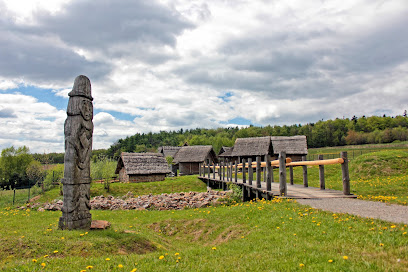
Swietokrzyski National Park
Explore the stunning landscapes and rich biodiversity of Świętokrzyski National Park, a premier hiking destination in Poland's Świętokrzyskie Mountains.

Kadzielnia Caves
Uncover the secrets of nature at Kadzielnia Caves, a breathtaking limestone wonder in Kielce, Poland, perfect for adventurers and nature lovers alike.

Łysa Góra
Discover the breathtaking beauty and rich history of Łysa Góra, a majestic mountain peak in Poland perfect for outdoor adventures and cultural exploration.

Museum of Martyrdom of Polish Village Michniów
Explore the Museum of Martyrdom of Polish Village Michniów for a moving journey through Poland's wartime history and resilience.

The observation platform on Gołoborzu
Explore the breathtaking views from the Gołoborze observation platform, a serene escape into Poland's stunning Świętokrzyskie Mountains.

Wietrznia Nature Reserve
Explore the breathtaking Wietrznia Nature Reserve in Kielce, Poland, a sanctuary of scenic beauty and rich biodiversity waiting to be discovered.

Świętokrzyskie Mountains
Discover the breathtaking landscapes and rich history of the Świętokrzyskie Mountains, a must-visit destination for nature lovers and adventurers in Poland.

Jaskinia Piekło pod Skibami
Explore the mystical Jaskinia Piekło pod Skibami, a stunning cave system in Poland, where nature's artistry meets ancient legends.

Kompleks Świętokrzyska Polana
Discover Kompleks Świętokrzyska Polana: A perfect blend of amusement rides, cozy accommodations, and beautiful nature in Poland's charming Chrusty region.

Essential places to dine
Gospoda Echa Leśne
Experience authentic Polish cuisine at Gospoda Echa Leśne in Łączna - perfect for families and food lovers seeking local flavors.
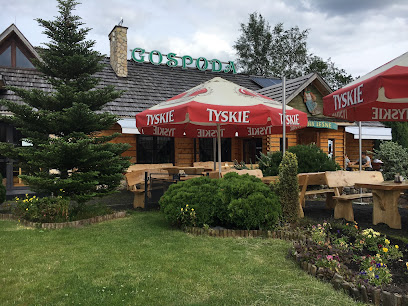
Karczma Mnicha
Experience authentic Polish cuisine at Karczma Mnicha in Nowa Słupia - where tradition meets flavor in a cozy setting.

Restauracja U Kucharzy Kielce
Discover authentic Polish and Italian cuisine at Restauracja U Kucharzy in Kielce - where flavor meets tradition in every dish.

Świętokrzyski Dwór Restauracja Hotel Wypoczynek Chrzciny Komunie Wesela Konferencje w Górach
Experience exceptional dining and comforting hospitality at Świętokrzyski Dwór in the heart of the enchanting Świętokrzyskie Mountains.

Roy Ben
Experience the best of European cuisine at Roy Ben in Kielce - where every meal is crafted with passion and served with warmth.

Sí Señor
Experience authentic Spanish cuisine at Sí Señor in Kielce – where every dish tells a story from the Mediterranean.

Restauracja Rockabilly Steakhouse and Whisky Bar
Discover the ultimate destination for steak lovers at Restauracja Rockabilly Steakhouse and Whisky Bar in Kielce - where great food meets excellent whisky.

Hotel Ameliówka
Discover tranquility at Hotel Ameliówka - where exceptional dining meets serene accommodation in Mąchocice Kapitulne.

Zajazd Złota-Woda
Experience the warmth and flavors of Polish cuisine at Zajazd Złota-Woda, your perfect retreat in scenic Łagów.

Zajazd Dla Ciebie Hotel i Restauracja Piotrów
Experience authentic Polish cuisine and warm hospitality at Zajazd Dla Ciebie Hotel i Restauracja in charming Piotrów.

Restauracja McDonald's
Savor your favorite fast-food classics at McDonald's in Występa - where comfort food meets convenience for travelers.

Świeże Ryby z Mazur - Smażalnia Górno
Experience authentic Polish cuisine at Świeże Ryby z Mazur - Smażalnia Górno, specializing in fresh fish dishes from the stunning Mazury region.

Restauracja Pod Sosnami
Experience authentic Polish cuisine at Restauracja Pod Sosnami in Starachowice – where tradition meets flavor in every dish.

Karczma - Izba Dobrego Smaku w Hucie Szklanej
Discover authentic Polish cuisine at Karczma - Izba Dobrego Smaku in Huta Szklana – where tradition meets taste.

Gościniec Europejski
Discover authentic Polish cuisine at Gościniec Europejski in Miedziana Góra – where tradition meets flavor in every dish.

Markets, malls and hidden boutiques
Museum of Minerals and Fossils
Explore the stunning Museum of Minerals and Fossils in Święta Katarzyna, featuring exquisite geological specimens and engaging exhibits for all ages.
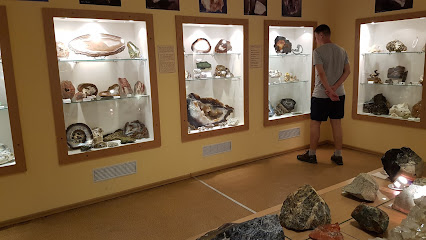
cud miód - autorskie lody i gofry
Indulge in artisanal ice cream and delicious waffles at Cud Miód in Święta Katarzyna, where every bite is a sweet delight.

Chata Kaka
Discover the heartwarming flavors of authentic Polish soups at Chata Kaka, a cozy soup kitchen in Kakonin, perfect for culinary travelers.

Delikatesy Centrum
Experience the vibrant flavors of Poland at Delikatesy Centrum in Nowa Słupia, a grocery store and deli offering a unique culinary adventure.

Stokrotka
Discover Stokrotka, Bodzentyn's charming grocery store, offering fresh local produce, traditional Polish snacks, and a taste of local culture.

Lewiatan
Explore Lewiatan in Bodzentyn for fresh local produce, delicious snacks, and a taste of Polish culture during your travels.
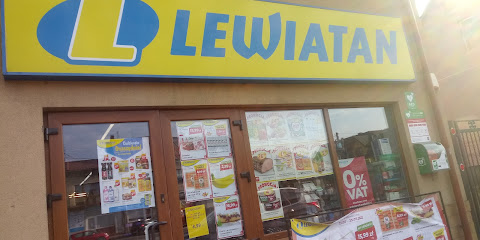
Sklep wielobranżowy - artkuły budowlane i inne
Discover Bieliny's variety store, where local charm meets a diverse selection of building supplies and everyday essentials for every traveler.

Miss Poppy Cheap, Stylish and Convenient
Discover Miss Poppy in Bodzentyn for unique, stylish second-hand clothing that combines affordability with a touch of local charm.

MW Wolscy
Discover the vibrant beauty of MW Wolscy, a charming garden center and florist in Huta Nowa, perfect for plant lovers and flower enthusiasts.
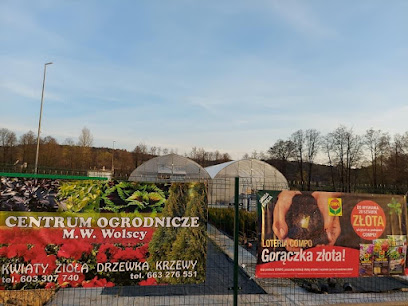
Sklep wielobranżowy U Iwonki
Explore Sklep wielobranżowy U Iwonki in Bieliny for a diverse selection of beauty supplies, clothing, and accessories that capture the local charm.

Sklep Wielobranżowy Małgorzata Domańska
Explore Wzdół-Kolonia's variety store for unique local products, crafts, and authentic Polish souvenirs in a cozy village atmosphere.

Spiżarnia Kaśki pod Łysicą
Explore healthy dining and exceptional local produce at Spiżarnia Kaśki pod Łysicą in picturesque Święta Katarzyna.

Galeria Rękodzieła
Explore the charm of Polish craftsmanship at Galeria Rękodzieła, where unique handmade treasures await every visitor in Święta Katarzyna.

Odido Delikatesy Świętokrzyskie u Kaśki
Experience the rich flavors of Poland at Odido Delikatesy Świętokrzyskie u Kaśki, your gateway to local delicacies in Święta Katarzyna.
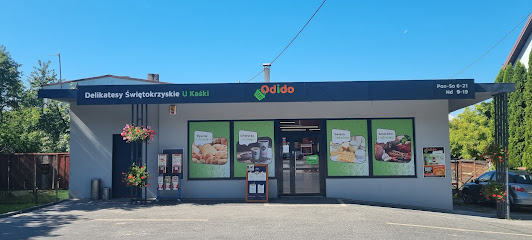
Społem Franek
Discover local flavors and authentic Polish products at Społem Franek in Święta Katarzyna, a must-visit grocery store for travelers.

Essential bars & hidden hideouts
Ambasada Śledzia
Experience the rich flavors of Polish cuisine at Ambasada Śledzia, a gastropub in Kraków known for its delightful seafood and vibrant atmosphere.

Shoemaker Irish Pub & Steakhouse | Restaurant
Discover the heart of Irish cuisine in Kielce at Shoemaker Irish Pub & Steakhouse, where every meal is a celebration of flavor and warmth.
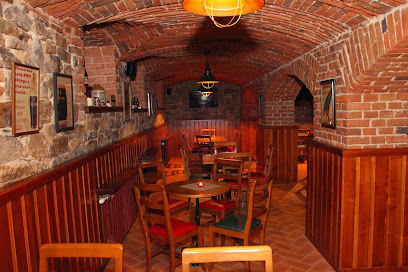
Bar Leśny
Experience the rustic charm and delightful flavors at Bar Leśny, a cozy bar and inn in scenic Złota Woda, Poland.

Duffy's Irish Bar
Discover Duffy's Irish Bar, a vibrant pub in Kraków's historic district, offering a delightful mix of traditional Irish charm and lively atmosphere.

Craft Beer PUB
Discover the rich flavors of local craft brews at Craft Beer PUB in Kielce, where every pint tells a story in a warm and inviting atmosphere.

CKM
Discover the vibrant atmosphere of CKM Brewpub in Kielce, where craft beer meets delicious food in a lively setting perfect for socializing.

Ministerstwo Śledzia i Wódki
Discover the essence of Polish cuisine at Ministerstwo Śledzia i Wódki, where herring meets vodka in a vibrant gastropub setting.

Pub Polski
Experience the best of Kraków's brewpub culture at Pub Polski, where craft beers meet traditional Polish cuisine in a vibrant setting.

Pijalnia BANG
Experience the vibrant craft beer scene at Pijalnia BANG, a lively brewpub in Kielce offering a unique selection of local brews and a welcoming atmosphere.

Pub Strych
Discover the cozy and vibrant atmosphere of Pub Strych in Starachowice, where delicious food, local beers, and great company await.
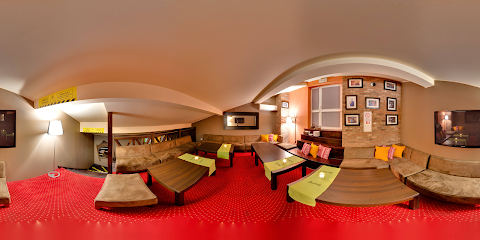
Tunel
Discover the vibrant atmosphere of Tunel, a top brewpub in Kielce offering craft beers and delicious local cuisine in a lively setting.

ShotBar ShotGun
Immerse yourself in the lively ambiance of ShotBar ShotGun, Kielce's premier pub offering eclectic drinks and unforgettable nights.

Rumcajs Bar Regionalny & Hotel
Discover the cozy Rumcajs Bar Regionalny & Hotel in Brzeziny, offering delicious local cuisine and comfortable accommodations amidst charming Polish scenery.

80's
Experience the vibrant 80's Brewpub in Kielce, a lively spot for craft beers and cocktails that captures the essence of retro nightlife.

Bar Pstrąg Wilków
Discover the cozy ambiance and local flavors at Bar Pstrąg Wilków, a must-visit bar in the heart of Poland's picturesque landscapes.

Local Phrases about Holy Cross Mountains
-
- HelloCześć
[cheshch] - GoodbyeDo widzenia
[doh veedzenyah] - YesTak
[tahk] - NoNie
[nyeh] - Please/You're welcomeProszę
[Proh-sheh] - Thank youDziękuję
[jyen-koo-yeh] - Excuse me/SorryPrzepraszam
[psheh-prah-shahm] - How are you?Jak się masz?
[yahk syeh mahsh] - Fine. And you?Dobrze. A ty?
[dohb-zheh. ah tih] - Do you speak English?Czy mówisz po angielsku?
[chi moo-veesh poh ahng-yehls-koo] - I don't understandNie rozumiem
[nyeh roh-zoo-myehm]
- HelloCześć
-
- I'd like to see the menu, pleasePoproszę kartę dań
[poh-proh-sheh kahr-teh dahn] - I don't eat meatNie jem mięsa
[nyeh yem myeh-sah] - Cheers!Na zdrowie!
[nah zdroh-vyeh] - I would like to pay, pleaseChciałbym zapłacić, proszę
[h-chyah-wihm zah-plah-cheech, proh-sheh]
- I'd like to see the menu, pleasePoproszę kartę dań
-
- Help!Pomocy!
[poh-moh-tsi] - Go away!Odejdź!
[oh-dey-j] - Call the Police!Zadzwoń po policję!
[zahdz-vohn poh poh-leets-yeh] - Call a doctor!Zadzwoń po lekarza!
[zahdz-vohn poh leh-kahr-zah] - I'm lostZgubiłem się
[zgoo-byeh-wem syeh] - I'm illJestem chory
[yeh-stem hoh-r-ih]
- Help!Pomocy!
-
- I'd like to buy...Chciałbym kupić...
[h-chyah-wihm koo-peech] - I'm just lookingTylko się rozglądam
[tih-koh syeh rohz-gwah-dahm] - How much is it?Ile to kosztuje?
[ee-leh toh kohs-too-yeh] - That's too expensiveTo jest za drogie
[toh yest zah droh-geh] - Can you lower the price?Czy możesz obniżyć cenę?
[chi moo-zhesh ohb-nee-zhoo-ch cheh-neh]
- I'd like to buy...Chciałbym kupić...
-
- What time is it?Która jest godzina?
[k-too-rah yest goh-dzee-nah] - It's one o'clockJest pierwsza
[yest pyehr-voo-shah] - Half past (10)Pół do dziesiątej
[poow doh dzyeh-shoohn-teh] - MorningRano
[rah-noh] - AfternoonPopołudnie
[poh-poo-wood-nyeh] - EveningWieczór
[vyeh-choor] - YesterdayWczoraj
[v-choh-rah-y] - TodayDziś
[jeesh] - TomorrowJutro
[yoo-troh] - 1Jeden
[yeh-den] - 2Dwa
[dvah] - 3Trzy
[tshih] - 4Cztery
[ch-teh-ree] - 5Pięć
[pyehnch] - 6Sześć
[sheshch] - 7Siedem
[syeh-dehm] - 8Osiem
[oh-shyem] - 9Dziewięć
[dzyeh-vyeahch] - 10Dziesięć
[dzyeh-shyehch]
- What time is it?Która jest godzina?
-
- Where's a/the...?Gdzie jest...
[gd-yeh yest] - What's the address?Jaki jest adres?
[yah-ki yest ah-dres] - Can you show me (on the map)?Czy możesz mi pokazać (na mapie)?
[chi moo-zhesh mee poh-kah-zahch (nah mah-pyeh)] - When's the next (bus)?Kiedy jest następny (autobus)?
[kyeh-dih yest nah-stehp-nih (ow-toh-boos)] - A ticket (to ....)Bilet (do ....)
[bee-leht (doh)]
- Where's a/the...?Gdzie jest...
History of Holy Cross Mountains
-
The Holy Cross Mountains, also known as the Świętokrzyskie Mountains, are among the oldest mountain ranges in Europe, with their origins dating back to the Paleozoic era, around 500 million years ago. The range is characterized by its rugged terrain and unique geological formations, which have fascinated geologists for centuries.
-
Archaeological evidence indicates that the Holy Cross Mountains have been inhabited since the Neolithic period. Early human settlements took advantage of the region's rich natural resources and strategic location. Numerous artifacts, including stone tools and pottery, have been discovered, shedding light on the lifestyles of these ancient communities.
-
One of the most famous legends associated with the Holy Cross Mountains is that of Saint Kinga. According to the tale, Saint Kinga, a 13th-century Polish princess, threw her engagement ring into a well in Hungary, which miraculously resurfaced in a well in the Holy Cross Mountains. This event is said to have led to the discovery of rich salt deposits in the region.
-
The Holy Cross Monastery, established in the 11th century, is a significant historical and religious site in the Holy Cross Mountains. The monastery became a major center of learning, culture, and religion in medieval Poland. It housed a fragment of the True Cross, which attracted pilgrims from all over Europe, giving the mountains their name.
-
In 1260, the Battle of Łysa Góra took place near the Holy Cross Monastery. This conflict was part of the larger struggle between the Polish Kingdom and the Teutonic Knights. Although the battle was inconclusive, it underscored the strategic importance of the Holy Cross Mountains in regional military history.
-
During the 19th century, the Holy Cross Mountains became a hub of industrial activity, particularly in mining and metallurgy. Rich deposits of iron, lead, and copper were exploited, leading to the development of numerous mining towns and industrial facilities. This period marked a significant transformation in the economic landscape of the region.
-
The Holy Cross Mountains played a crucial role during World War II as a stronghold for Polish resistance movements. The dense forests and rugged terrain provided ideal cover for partisan groups fighting against the occupying forces. Numerous skirmishes and acts of sabotage took place in these mountains, contributing to the broader struggle for Polish independence.
-
Today, the Holy Cross Mountains are a protected area, part of the Świętokrzyski National Park. They are a popular destination for tourists and nature enthusiasts, offering a blend of natural beauty and rich historical heritage. The region continues to be a site of archaeological and geological research, revealing new insights into its ancient past.
Holy Cross Mountains Essentials
-
The Holy Cross Mountains, also known as the Świętokrzyskie Mountains, are located in southeastern Poland. The nearest major city is Kielce, which is well-connected by train and bus services from larger cities like Warsaw and Krakow. The Warsaw Chopin Airport (WAW) and Krakow's John Paul II International Airport (KRK) are the closest international airports. From these airports, you can take a train or bus to Kielce. From Kielce, local buses and taxis are available to take you to various points in the Holy Cross Mountains.
-
Public transportation in the Holy Cross Mountains region primarily consists of buses and minibuses that connect Kielce with smaller towns and villages. Taxis are also a convenient option for shorter trips within the region. For those who prefer more flexibility, car rentals are available in Kielce and offer the convenience of exploring at your own pace. Biking is another popular way to explore the scenic trails of the region.
-
The official currency of Poland is the Polish Zloty (PLN). Credit cards are widely accepted in hotels, restaurants, and shops in larger towns like Kielce. However, it is advisable to carry cash, especially when visiting smaller villages and rural areas where card payments may not be accepted. ATMs are available in Kielce and other larger towns, so withdrawing cash as needed is relatively easy.
-
The Holy Cross Mountains are generally safe for tourists. However, it is always wise to take standard precautions. Avoid walking alone at night in unfamiliar areas and keep an eye on your belongings in crowded places. There are no specific high-crime areas targeting tourists, but it's important to remain vigilant and aware of your surroundings.
-
In case of emergency, dial 112 for immediate assistance. This number connects you to emergency services including police, fire, and medical help. Kielce has hospitals and medical facilities that can handle emergencies. Pharmacies are available in larger towns for minor health issues. It is highly recommended to have travel insurance that covers medical emergencies.
-
Fashion: Do dress modestly, especially when visiting religious sites. Avoid wearing overly revealing clothing. Religion: Do respect local customs and traditions. Always cover your head when entering churches and monasteries. Public Transport: Do be respectful and give up your seat to elderly passengers. Don’t eat or drink on public transport. Greetings: Do greet people with a handshake and maintain eye contact. A slight bow of the head is also a sign of respect. Eating & Drinking: Do try local delicacies and accept food offerings graciously. Don’t refuse hospitality, as it is considered impolite.
-
To experience the Holy Cross Mountains like a local, visit the local markets where you can buy fresh produce and traditional Polish goods. Engage with locals, who are often friendly and willing to share stories about the region's history and culture. Don’t miss visiting the Święty Krzyż (Holy Cross) Monastery, one of the oldest in Poland, located on Łysa Góra (Bald Mountain). For a unique experience, hike the numerous trails that offer breathtaking views of the surrounding landscapes.
Nearby Cities to Holy Cross Mountains
-
Things To Do in Radom
-
Things To Do in Tarnow
-
Things To Do in Krakow
-
Things To Do in Rzeszow
-
Things To Do in Lublin
-
Things To Do in Czestochowa
-
Things To Do in Lodz
-
Things To Do in Warsaw
-
Things To Do in Gliwice
-
Things To Do in Bielsko-Biala
-
Things To Do in Zakopane
-
Things To Do in Poprad
-
Things To Do in Opole
-
Things To Do in Prešov
-
Things To Do in Ostrava









